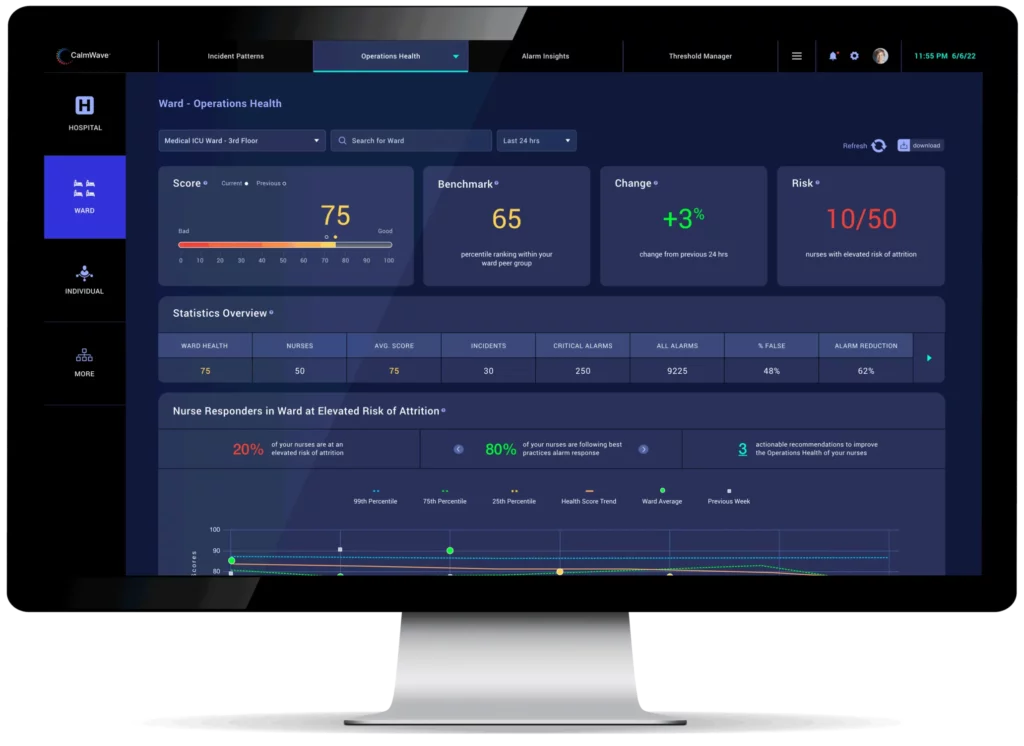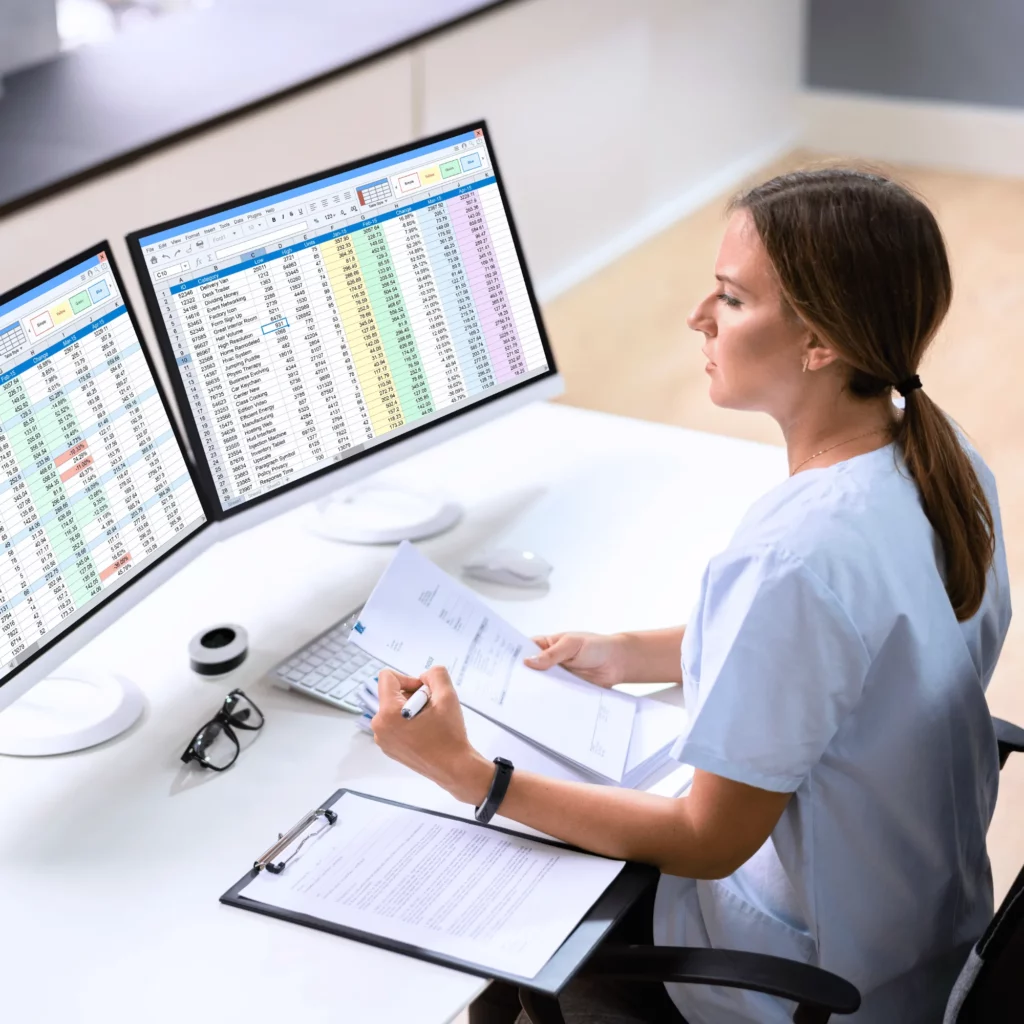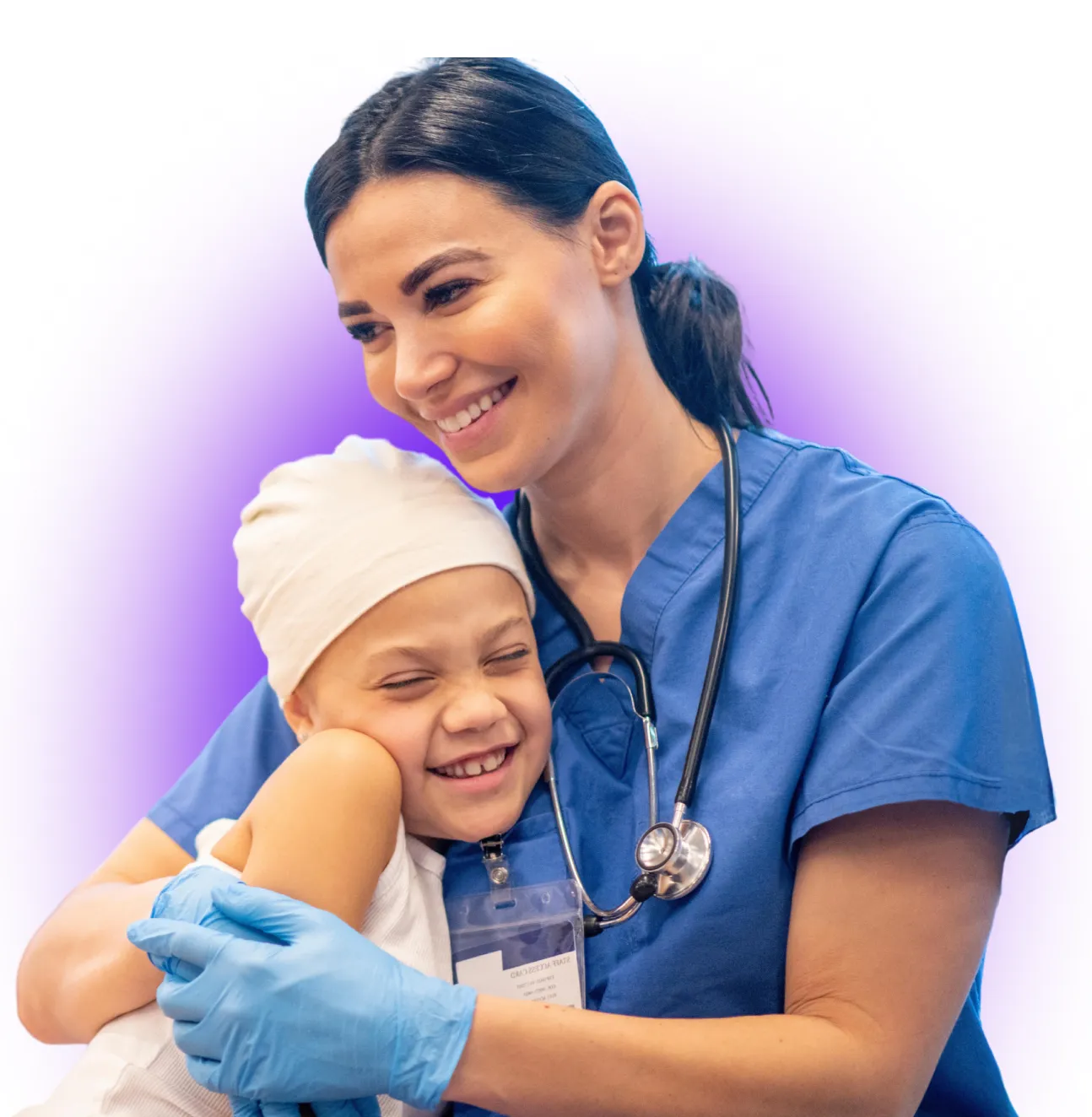By using advanced machine learning techniques, CalmWave provides clinicians more accurate alarm parameters. This information can also be used along with other key data inputs to provide an overall measure of clinician workload. In concert, these tools can be used to reduce unnecessary alarms, orchestrate staffing, track employee health, and improve patient outcomes.


Streamlining your entire team.
Manage controls and alerts in one simple interface.
An intuitive interface to manage your patients while gaining a better understanding of threshold adjustments to optimize your care.
Understand the health of your patients and staff.
See real-time analytics of patients, nurses, and alarms by shift, by the individual, and by the bed to understand the health of your staff and their patients.
Make data-driven decisions for your patients.
Advanced analytics take into consideration the myriad of inputs from patient care.
Capture a macro view of your entire department.
Understand what’s happening across your department today, vs. last shift, vs. last week, or month over month. Plan annual and quarterly reviews to ensure your protocols and performance are dialed in.
Benchmark yourself versus your peers.
Get a real-time sense of your operational maturity across your entire health system. Compare and set benchmarks across each department.
Your hospital's central nervous system.
Receiving and interpreting real-time vital sign signals and EMR data, CalmWave’s recommendations help reduce non-actionable alarms, drive greater fidelity in patient acuity, and generate an objective measure of staff’s operational health to prevent burnout.
To achieve this, CalmWave deploys technology along with an expert services team that focus on the following:


